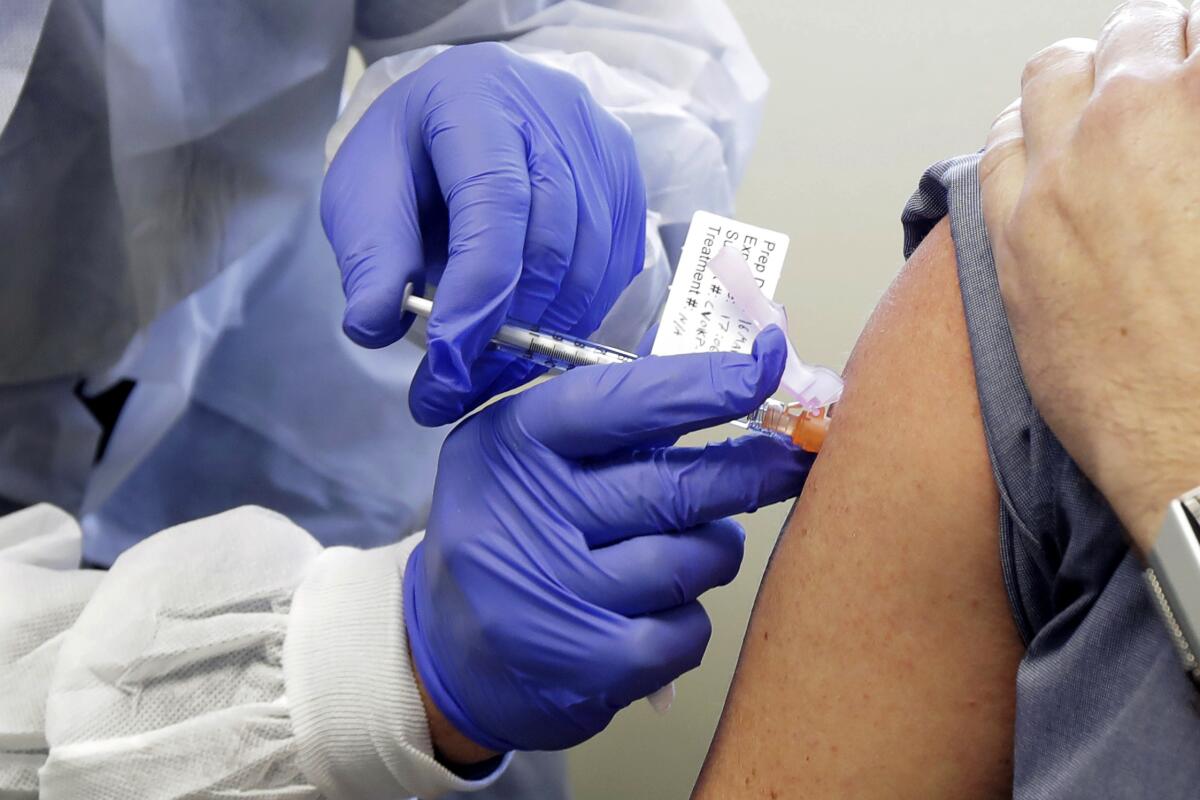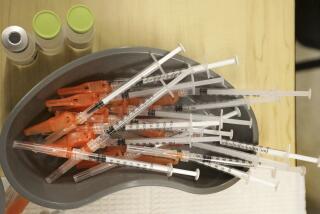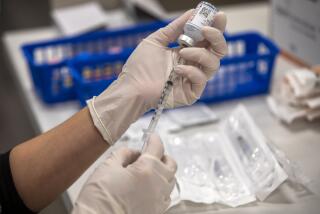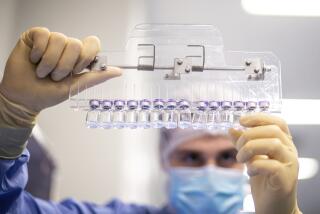Op-Ed: The U.S. stumbled badly with coronavirus testing. How will it distribute 300 million doses of vaccine?

- Share via
In Washington and on Wall Street, hopes for full social and economic recovery from the pandemic now hinge on the development of a coronavirus vaccine. With several large ongoing clinical trials and more than 165 vaccine candidates in development, chances are good that one will eventually prove to be effective.
Getting to a successful Phase 3 trial — which would show a vaccine’s safety and efficacy — would be a scientific triumph, but that would not be the end of the road. A vaccine is ultimately only as effective as its distribution and use by the population to establish the herd immunity needed for society to move on from this pandemic.
The United States’ largely uncoordinated and haphazard response to COVID-19 raises a crucial question: Even if we do develop a successful vaccine, is the government even capable of getting it to the people in time?
The Trump administration has promised that it will make available 300 million vaccine doses, yet six months into this pandemic, we haven’t even performed 55 million COVID-19 tests[DL2] [PNA3] . And the tests that have been performed largely used materials and tools that most clinical labs already had on hand, such as nasopharyngeal swabs and thermal cyclers.
Even with these advantages, and with a half-year of ramp-up time, we are still struggling with test wait times that exceed a week in many cities. Overall testing across the country is only a fraction of what public health leaders have urged for months.
So far, the federal government has failed to take the lead in directing and coordinating the COVID-19 response, frequently abdicating its responsibilities to state and local officials. States and municipalities have often been left on their own to procure the medicines, ventilators, personal protective equipment, and personnel they need to combat the virus. At times, they have been forced to compete with one another. When the federal government has stepped in, its allocation of ventilators and remdesivir, an experimental treatment for COVID-19, has at times appeared to be politically influenced.
Given this record, should we have confidence that vaccine production and immunization of the entire population will go any better?
No matter how many vaccines reach the finish line, there will be challenges in large-scale production, coordination of global supply chains, cold storage and distribution. These problems will very likely lead to initial production shortages. Whether these become long-term deficiencies will be a function of preparedness and coordination.
In other words, it is the political and production constraints that threaten the capacity of a future vaccine to quell the virus, regardless of how effective the vaccine itself may be. A project of this scale simply cannot be achieved without a national strategy.
There has been some initial progress in this area. For example, a $1.2-billion agreement was struck in late May between AstraZeneca and the federal Biomedical Advanced Research and Development Authority to support development activities, and a $2-billion contract was announced last week between the federal government and Pfizer/BioNTech to procure 100 million doses of an as-yet-undeveloped vaccine by year’s end.
Some drug companies have indicated that they would commit to using their excess manufacturing capacity to support others, if the approved vaccine is not one of their own. Nonetheless, this effort will need a quarterback, and the federal government is the only player with the means and mandate to see this endeavor through.
We cannot let vaccine access become a repeat of the free-for-alls and backdoor dealings that resulted from limited PPE supply, when rich and powerful stakeholders got what they needed while the less well-connected went begging.
Before vaccine distribution begins, the government needs to set clear, comprehensive guidelines for who receives the earliest available doses. It should focus on those most at risk, including healthcare workers, essential municipal workers, the elderly, people with chronic illnesses and school staff in districts that reopen. This approach could minimize spread of the virus among vulnerable populations as vaccine production ramps up for the remainder of the country.
Developing a vaccine at breakneck speed is a feat of science; ensuring that it reaches the entire population will be a feat of logistics. Last week’s promising results from three separate vaccine candidates are reason for optimism. But America’s COVID-19 response has been largely defined by sluggishness and decentralization. We have to address those failings if this country is to succeed in bringing a vaccine from the laboratory bench to the bedside.
Daniel L. Liebman is a resident physician at Massachusetts Eye and Ear and Harvard Medical School. Nisarg A. Patel is a resident surgeon at UC San Francisco.
More to Read
A cure for the common opinion
Get thought-provoking perspectives with our weekly newsletter.
You may occasionally receive promotional content from the Los Angeles Times.










